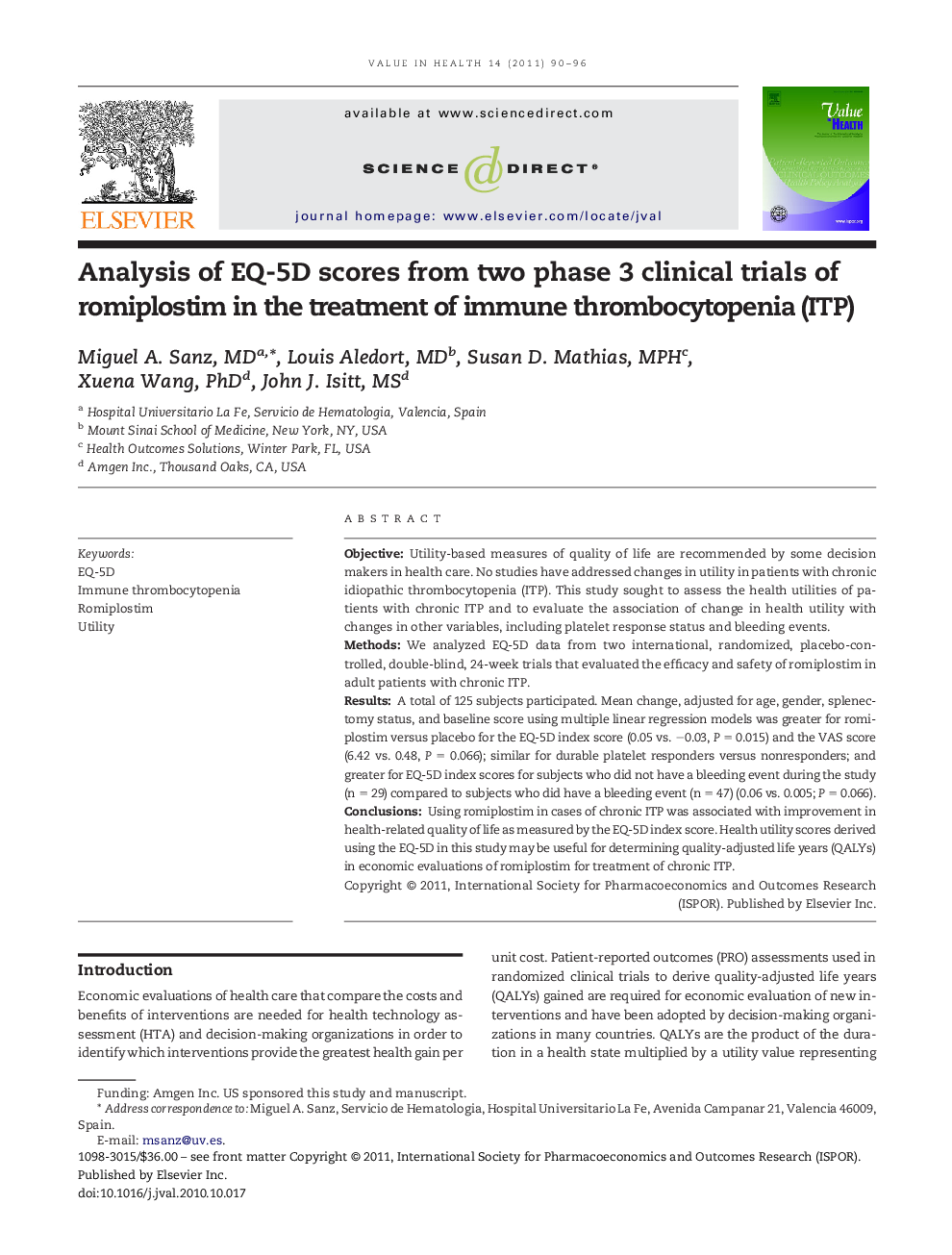| Article ID | Journal | Published Year | Pages | File Type |
|---|---|---|---|---|
| 991420 | Value in Health | 2011 | 7 Pages |
ObjectiveUtility-based measures of quality of life are recommended by some decision makers in health care. No studies have addressed changes in utility in patients with chronic idiopathic thrombocytopenia (ITP). This study sought to assess the health utilities of patients with chronic ITP and to evaluate the association of change in health utility with changes in other variables, including platelet response status and bleeding events.MethodsWe analyzed EQ-5D data from two international, randomized, placebo-controlled, double-blind, 24-week trials that evaluated the efficacy and safety of romiplostim in adult patients with chronic ITP.ResultsA total of 125 subjects participated. Mean change, adjusted for age, gender, splenectomy status, and baseline score using multiple linear regression models was greater for romiplostim versus placebo for the EQ-5D index score (0.05 vs. −0.03, P = 0.015) and the VAS score (6.42 vs. 0.48, P = 0.066); similar for durable platelet responders versus nonresponders; and greater for EQ-5D index scores for subjects who did not have a bleeding event during the study (n = 29) compared to subjects who did have a bleeding event (n = 47) (0.06 vs. 0.005; P = 0.066).ConclusionsUsing romiplostim in cases of chronic ITP was associated with improvement in health-related quality of life as measured by the EQ-5D index score. Health utility scores derived using the EQ-5D in this study may be useful for determining quality-adjusted life years (QALYs) in economic evaluations of romiplostim for treatment of chronic ITP.
